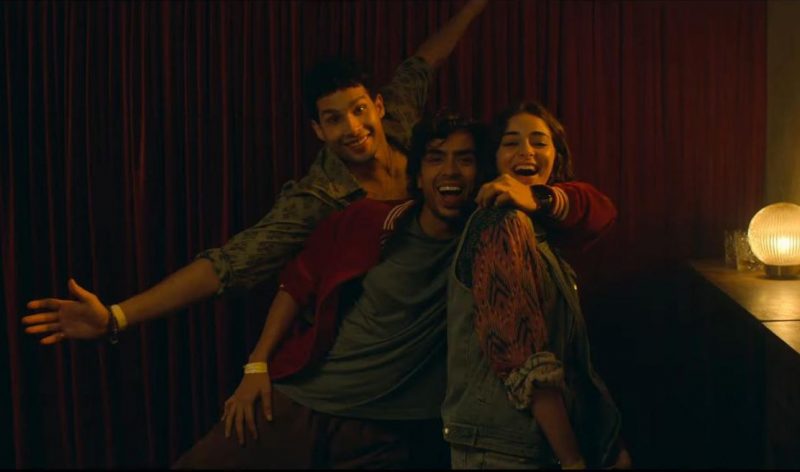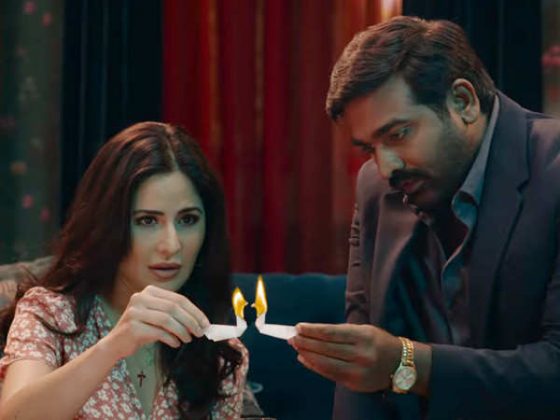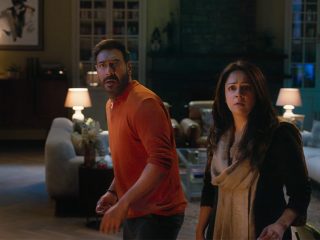Music is important in Hindi cinema, be it in the commercial sense of having a defined choreography and actors lip-syncing the lyrics to the tracks and exhibiting choreographed moves, or in the soundscape methodology of setting the mood or characteristics of the story it is setting out to tell without really overtly pointing out the existence of the tune within the format of the narrative. The second aspect is predominantly utilized in dramatic circumstances, in the exhibition of characters’ angst, and in the knotted world of relationships in all its multitudes. But the key for the second aspect to work, be in sync, and elevate the movie is in understanding the characters and the story it is trying to tell and applying the melody and tune in that fashion.
At their best, Zoya Akhtar and Reema Kagti take the exploration of coming-of-age through the prism of South Bombay and the upper-class milieu without glorifying or talking down to the audience. When they are firing on all cylinders, Akhtar and Kagti’s writing helps in bringing out the universalities of the difficulties faced by the generation explored in their stories, irrespective of the economic strata, sometimes even molded, expanded, and evolved due to the economic strata.
“Kho Gaye Hum Kahan,” directed by debutant director Arjun Varain Singh on a script by Akhtar and Kagti with dialogues by Yash Sahai, works predominantly because of the music by OAFF, aka Kabeer Kathpalia and Savera. Their score works perfectly in settling the mood and vibe of the generation the story is setting out to tell—the world of three youngsters in Mumbai, whose friendship transcends the religion or the economic strata they belong to or come from, and whose conflicts stem from the accessibility afforded to them by social media.
All these characters feel very much part of the mold of the Akhtar and Kagti universes. Siddhant Chturvedi’s Imaad is a stand-up comic with intimacy issues due to a dark event in his past; Adarsh Gaurav’s Neil is a gym trainer living with his parents, having a chip on his shoulder because of the life he comes from and the ambitions he is pursuing; and Ananya Pandey’s Ahana works at a marketing firm, whose life gets upended when her relationship suddenly stalls because her boyfriend asks for a break.
What the film does cleverly is let all these characters grapple through their storylines while also exploring the friendship the three of them share without being so blunt about the messaging or the moralizing, which unfortunately their brand of filmmaking has slowly become synonymous with. It perhaps also helps that Singh is such a visual and aural director in his own right, and he has his own unique flourishes that he utilizes expertly. “Kho Gaye Hum Kahan” is one of the few Indian films that captures the magic and yet the intricacies of the digital age. Relationships might have maintained their essence, but the labyrinthine mechanisms of understanding and trying to ensure that you are not being understood beneath the cloak of likes, comments, and sparkle emojis are captured in their full-blown electronic glory.
Perhaps that is why the templatization of “Dil Chahta Hai” works for the most part here because the transplanting of that narrative into 2023 feels settled rather than force-fitted. It also helps that the performances hold up the lion’s share of carrying this narrative. Ananya Pandey might have given the strongest performance of her career, the secret sauce being to play subtle variations of her persona. Siddhant Chaturvedi has the weakest performance amongst the trio, but that also might be due to the conceptualization of his career. Bollywood’s definition of stand-up comedy becomes so tied up in making that career a vehicle for exposition or closure of story arcs that it works as a shield from being critiqued as blatant.
But that becomes antithetical to the actual essence of stand-up comedy in films—the jokes are never funny. And no amount of comedic coaching by stand-up comedian Sapan Verma can help the viewers buy into Chaturvedi’s jokes as being smooth enough that Imaad is considered a Netflix special. The inciting incident, too—Imaad’s jokes hitting a bit too close and too personal for Neil—feels oddly out of place from Imaad’s perspective because those sound less like jokes and more like vindictive rants.
Speaking of Neil, though, Adarsh Gaurav might be saddled with the very delicate topic of the rise of the internet troll, but he is such a good actor and capable of pulling depth and nuances out of situations, perhaps not requiring them, that even his subplot feels compelling. That is the key here. Ahana’s methods of being more outgoing on social media to attract her ex-beau, Imaad’s burgeoning relationship with Simran, a woman ten years older than him who is satisfying her expression through art by clicking photographs of her Tinder dates, and Neil’s subplot all work for the majority of the film because of the performances and the direction. They manage to immerse you in the world of Gen-Z and the ones lying at the fringes without alienating the general audience from the storytelling.
Until the end, because the story has too many conflicts to rack up on, and the conclusion and wrapping up of the storylines inadvertently cause the blunt messaging of its creators to come out in full force. The resolutions feel, for lack of a better word, tacky and clumsy. It almost reeks of oversimplification, which perhaps makes sense considering the film has to end. But does an ending always need to be happy? Does a character get closure after reciting his trauma in a comedic setting? Is closure really that easy, or have the tenets of therapy become so second nature in this era that all the nuance and circumstances of those tenets are being lost in the shuffle? Does a confession of hacking another Instagram account entail writing a confession after entering that same account again? Is it that easy, or does it feel like a cop-out?
But then you see the final credits, where Ahana’s character recites the five resolutions for the new year, and you are reminded, unfortunately, of Kabir from Made in Heaven. Perhaps “Kho Gaye Hum Kahan” would have worked better if the characters were allowed to be lost for a bit more, as the title suggests, and allowed to organically find their way back again, rather than the invisible hand of the narrative wrapping all their storylines up. Still, as far as updates go towards the exploration of the coming-of-age narrative for the Gen-Z audience, it manages to be satisfying.











